
- HOME PAGE
- TOURS LIST
- SITE INDEX
- SITE VISITS
-
TOUR BLOG
PHNOM PENH ATTRACTIONS SIEM REAP ATTRACTIONS DAY 1 - BANGKOK/PHNOM PENH, 19 February 2013 DAY 2 - PHNOM PENH, 20 February 2013 DAY 3 - PHNOM PENH, 21 February 2013 DAY 4 - PHNOM PENH/SIEM REAP, 22 February 2013 DAY 5 - SIEM REAP, 23 February 2013 DAY 6 - SIEM REAP, 24 February 2013 DAY 7 - SIEM REAP, 25 February 2013 DAY 8 - SIEM REAP/BANGKOK, 26 February 2013
PHNOM PENH - Tourist Sites in Detail
Tuesday 19th February
Sisowath Quay aka Riverside..... This is an attractive boulevard running along the banks of the Mekong and the Tonle Sap. It's fronted by a large, long open space with manicured lawns, palm trees and open pathways, all recently re-done as part of a Japanese funded project to upgrade the flood infrastructure along the river. The built-up side of the street is home to cafés and shops and the better class of bar, and is popular with tourists and expat Westerners.
Wednesday 20th February
Toul Sleng Genocide Museum..... Toul Sleng Genocide Museum is situated in the suburbs south of Phnom Penh, the site of a former secondary school. It is the security office 21 in 'Democratic Kampuchea' created by order of Pol Pot (Sa Lut Sor) on April 17, 1975.
Immediately after liberation on 7th January 1979 the appointed government began to collect evidence from S-21 including photographs, films, prisoner confessions, torture tools and shackles and fourteen corpses in the compound all left behind when the Khmer Rouge fled. Today the graves of the fourteen bodies including that of a woman can be seen in the courtyard while much of the evidence presented to the Kampuchea People's Tribunal is on display in the four building blocks A-D which surround the courtyard. Building block A was used for detainees accused of leading the uprising against the revolution. Buildings B-D had a different function. The former classrooms on the ground floor were divided into small cells with brick walls while the upper floors had large cells where prisoners were crowded together. Outside in the yard is a wooden poll which was turned into an interrogation and torture machine. It is estimated that 20,000 people may have been processed through S-21 between 1975 and 1978. Finally, the torture methods portrayed in the photographs and sketches are as gruesome as ever can be designed in the minds of humanity. They are simply horrific. Entry $2.
The Choeung Ek Genocide Centre..... Choeung Ek is the site of a former orchard and Chinese graveyard about 17 km south of Phnom Penh and is the best-known of the sites known as The Killing Fields, where the Khmer Rouge regime executed over one million people between 1975 and 1979. Mass graves containing 8,895 bodies were discovered at Choeung Ek after the fall of the Khmer Rouge regime. Many of the dead were former political prisoners who were kept by the Khmer Rouge in their Tuol Sleng detention center.
Today, Choeung Ek is a memorial, marked by a Buddhist stupa. The stupa has acrylic glass sides and is filled with more than 5,000 human skulls. Some of the lower levels are opened during the day so that the skulls can be seen directly. Many have been shattered or smashed in.
Tourists are encouraged by the Cambodian government to visit Choeung Ek. Apart from the stupa, there are pits from which the bodies were exhumed. Human bones still litter the site.
On May 3, 2005, the Municipality of Phnom Penh announced that they had entered into a 30-year agreement with JC Royal Co. to develop the memorial at Choeung Ek. As part of the agreement, they are not to disturb the remains still present in the field. The film The Killing Fields is a dramatized portrayal of events like those that took place at Choeung Ek. Entry $5.
Thursday 21st February
The Royal Palace..... The Royal Palace is a complex of buildings which serves as the royal residence of the king of Cambodia. Its full name in the Khmer language is Preah Barum Reachea Veang Chaktomuk Serei Mongkol. The Kings of Cambodia have occupied it since it was built in the 1860's, with a period of absence when the country came into turmoil during and after the reign of the Khmer Rouge. The palace was constructed after King Norodom relocated the royal capital from Oudong to Phnom Penh in the mid-19th century. It was gradually built atop an old citadel called Banteay Kev. It faces towards the East and is situated at the Western bank of the cross division of the Tonle Sap River and the Mekong River called Chaktomuk. In the week ended 7 February 2013, the royal funeral of Cambodia's late King Norodom Sihanouk took place when his remains were taken from the cremation site to keep in the royal palace in a procession.
The National Museum of Cambodia..... The National Museum of Cambodia, situated near the Royal Palace on the bank the Tonle Sap River houses one of the world's largest collections of Khmer art, including sculptural, ceramics, bronzes, and ethnographic objects. The Museum's collection includes over 14,000 items, from prehistoric times to periods before, during, and after the Khmer Empire, which at its height stretched from Thailand, across present-day Cambodia, to southern Vietnam. The Museum buildings, inspired by Khmer temple architecture, were constructed between 1917 and 1924. The museum was officially inaugurated in 1920, and renovated in 1968.
King Sihanouk memorial..... The King Sihanouk memorial stands alongside the Royal Palace. It was build to honor the passing of King Norodom Sihanouk whose state funeral was held at the beginning of February 2013.
Wat Phnom..... Wat Phnom is a Buddhist temple (wat) in Phnom Penh. It was built in 1373, and stands 27 metres (88.5 ft) above the ground. It is the tallest religious structure in the city. The pagoda was given the name of Wat Preah Chedey Borapaut. Legend relates that Daun Penh, a wealthy widow, found a large koki tree in the river. Inside the tree she found four bronze statues of the Buddha. Lady Penh constructed a small shrine on an artificial hill made by the people living in the village to protect the sacred statues. Eventually this became a sacred site and sanctuary where people would make blessings and pray. The sanctuary itself was rebuilt several times in the 19th century and again in 1926 but during the Khmer Rouge regime the temple was badly damaged and later reconstructed as was much of the city of Phnom Penh.
Phnom Penh Railway Station..... At this time Phnom Penh Railway Station is closed, locked shut, with little evidence of activity. However, in a statement by CEO of Toll Royal Railway, Davis Kerr on 7 January 2013, a limited freight service commenced on 28 December between Phnom Penh and Sihanoukville. Operating 3 return container services per week, the plan is to gradually increase the load up to around 3,000 tons. He also confirmed that presently reconstruction work is progressing on sections of line that will complete the link as far as the Thai border. These are principally the section between Phnom Penh and the railway junction at Bat Doeng and a section between Sisophon and Poi Pet. The planned opening of this line is September 2013. In the meantime the company has commissioned locomotives and rolling stock and is constructing a repair shop near Phnom Penh.
Next: Siem Reap.
Phnom Penh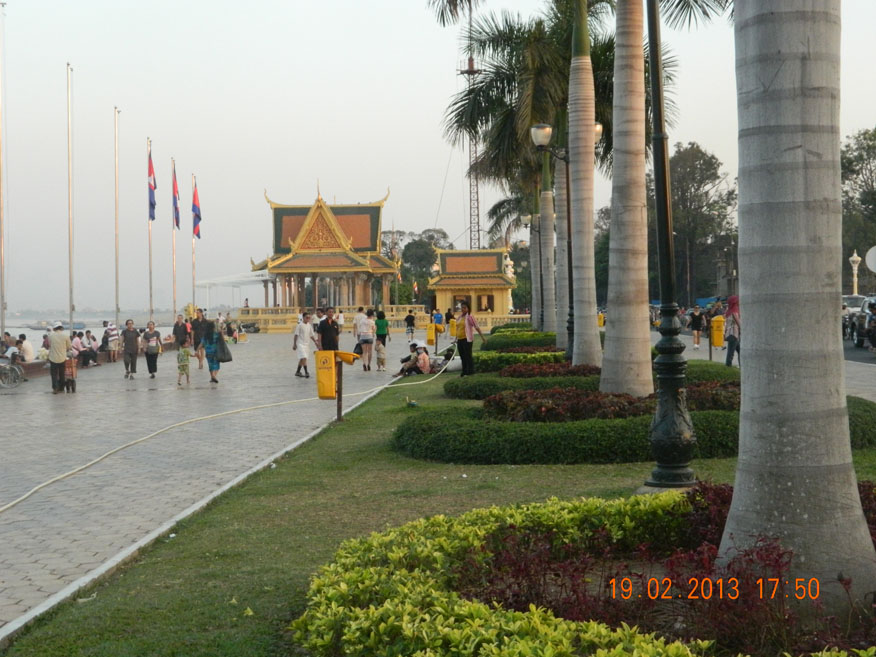
View along Sisowath Quay
beside the Tonle Sap River
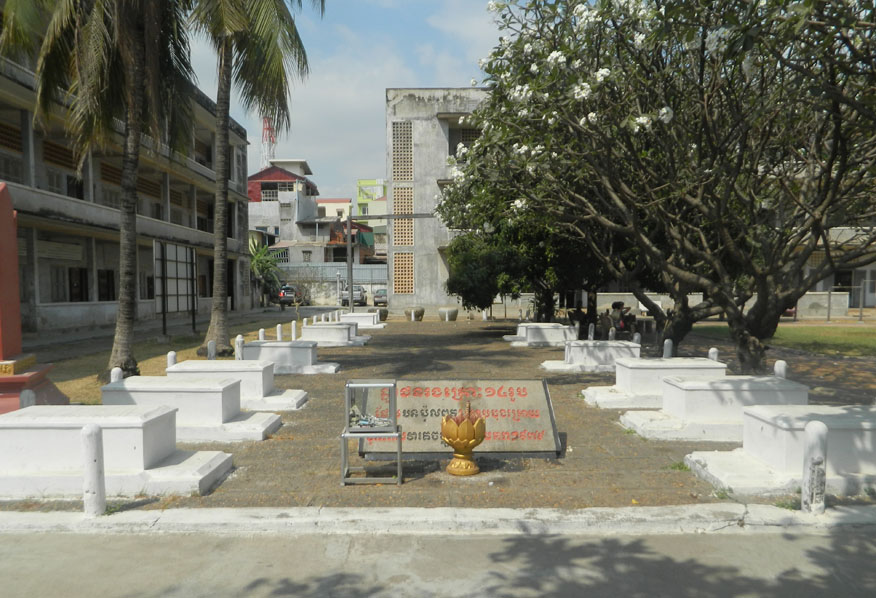
Toul Sleng Genocide Museum
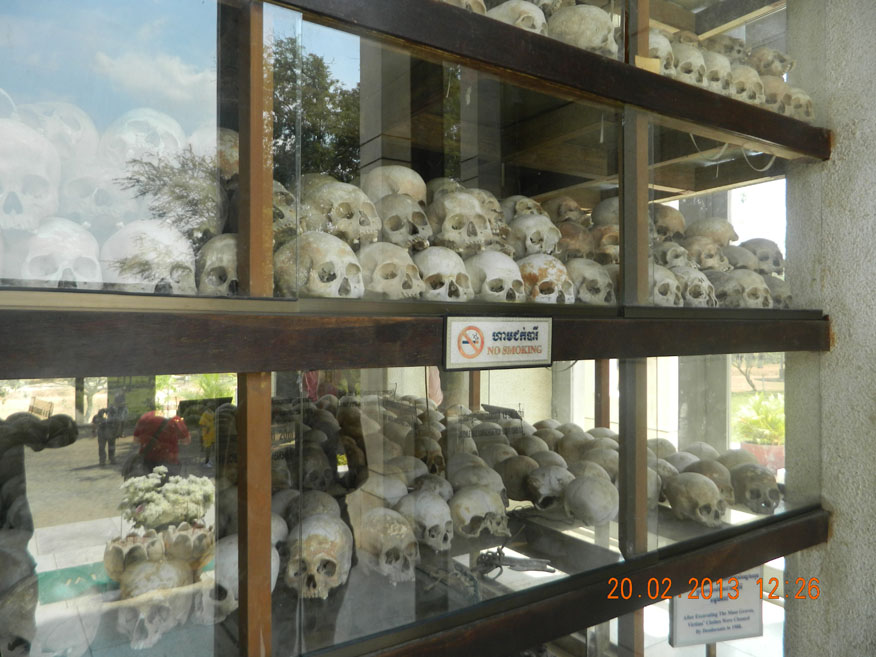
5,000 Human Skulls in the Stupa at
Choeung Ek Genocide Centre
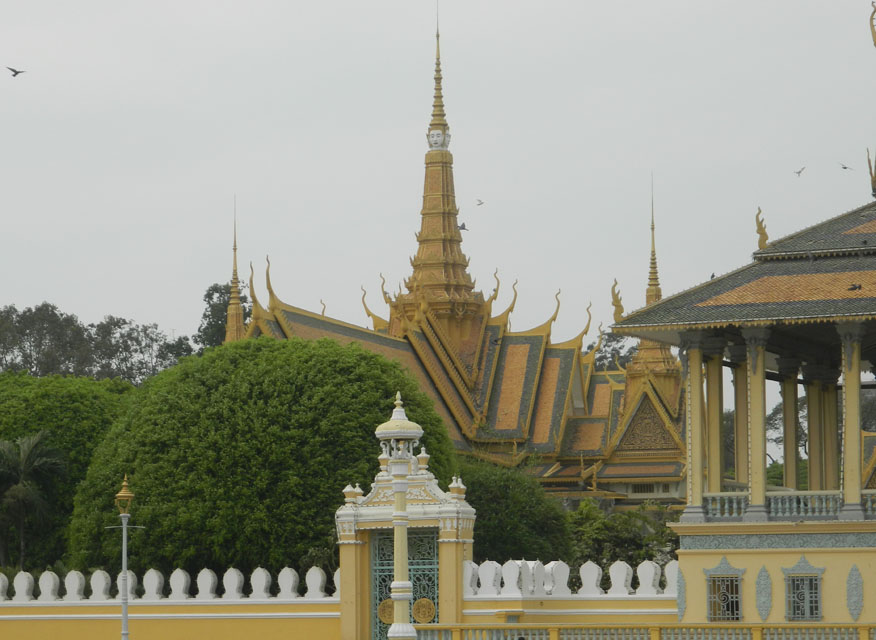
Classic Khmer Architecture at Royal Palace
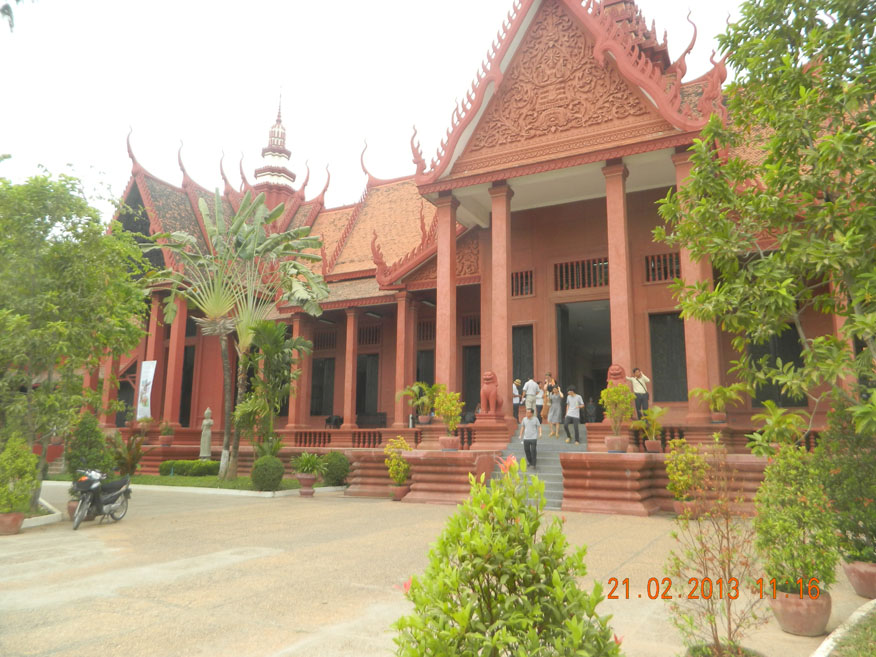
The National Museum of Cambodia
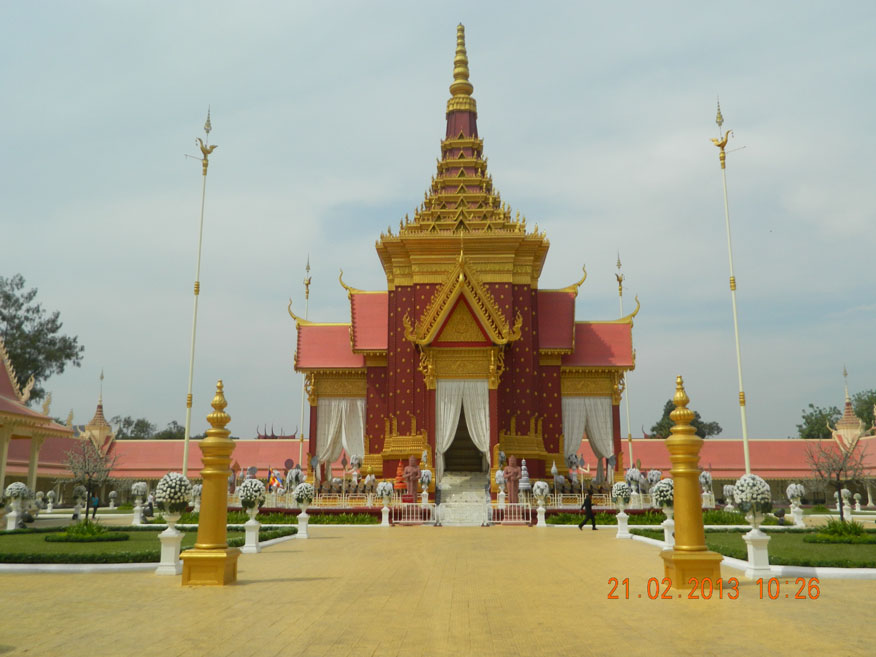
King Sihanouk memorial
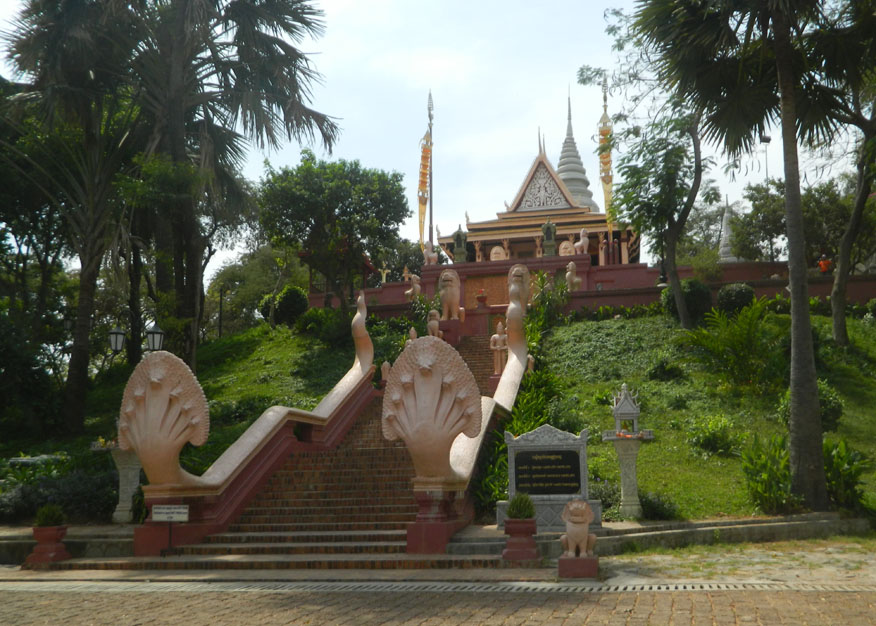
Wat Phnom
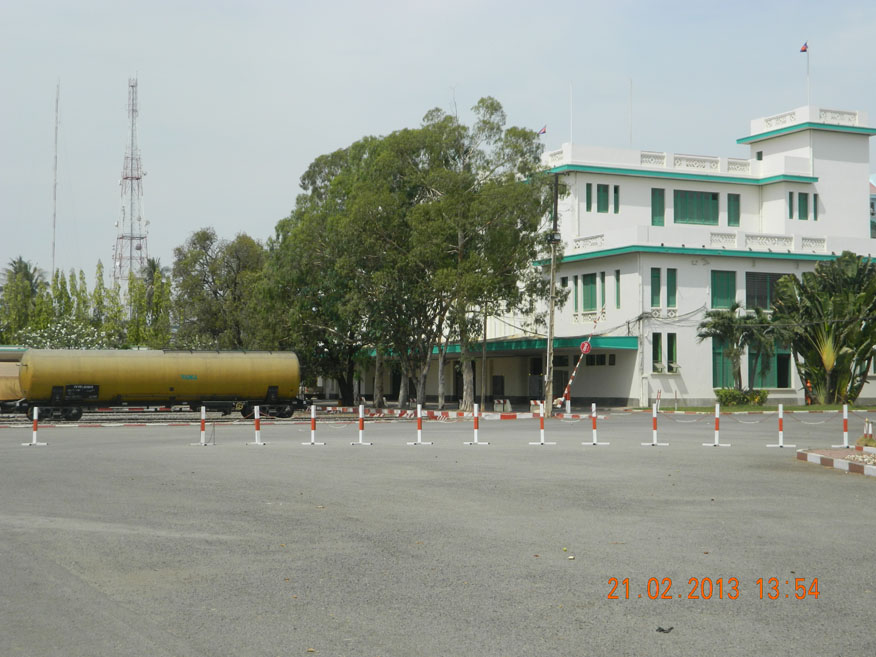
The practically deserted Railway Station